Vard: Vigilance and expectations
The Vigilance concept continues a long line of waiting for something that won't exist
I didn't expect to make a seperate post about Vard today, in fact, I didn't plan to touch upon Vard much at all.
As I grind through research for my inevitable CMMC post I have been in constant reminder of the Vigilance proposal, and all the goodies that come with it.
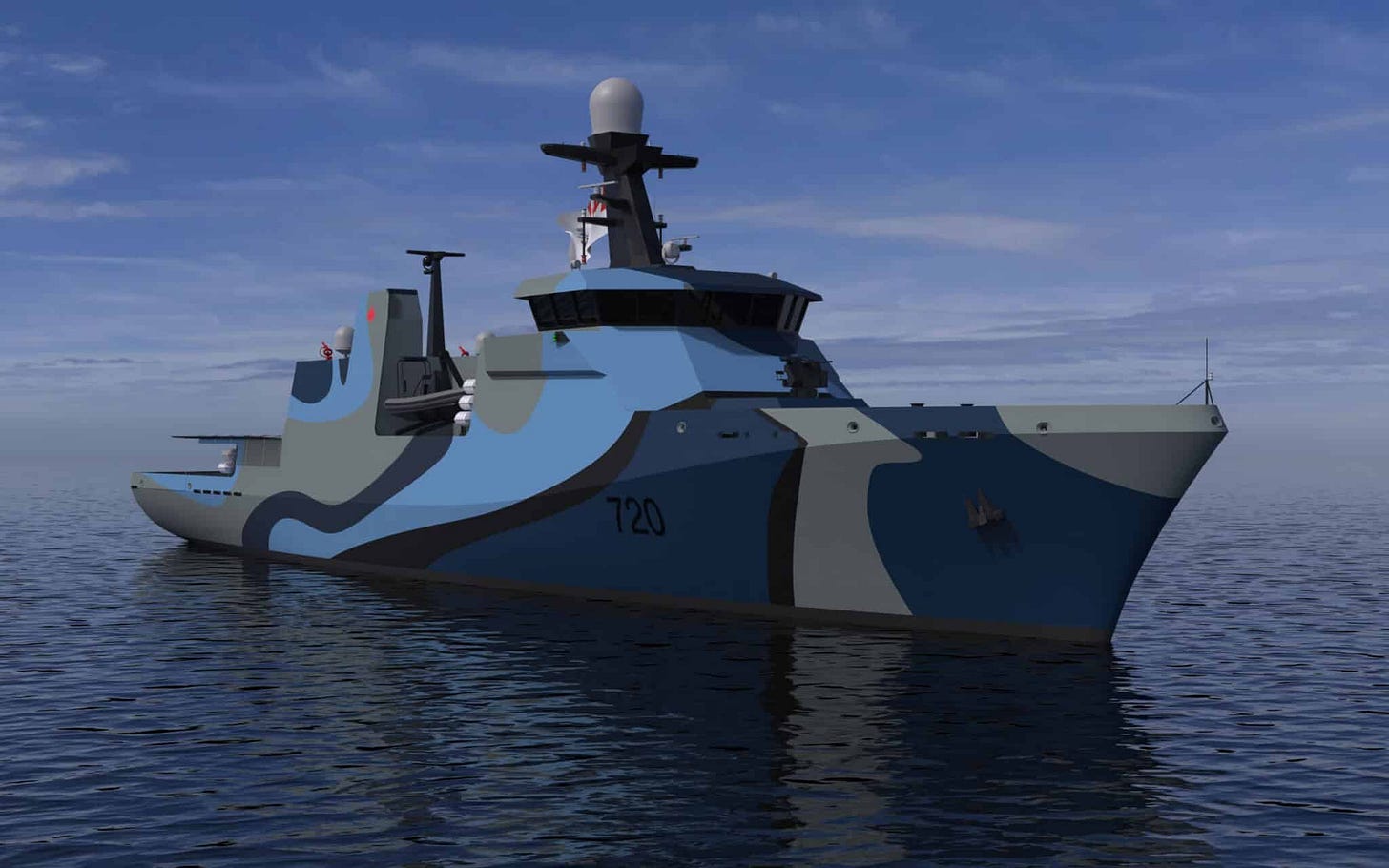
I want to make clear, I don't hate the Vigilance design. I think it is perfectly fine and reasonable for what it is. It does what it needs to, at least in theory.
Vigilance has gone through two redesigns since its introduction at CANSEC 2023, unsurprising given the platform is more a concept of what Vard could produce if asked.
They clearly have a design, but beyond that base concept lies a platform that is desperately trying to figure out what its meant to do.
Canadian companies tend to do this, creating solutions for a problem that doesnt exist or isnt thought of. Vard has Vigilance, Davies has G-LAM….
Vigilance is another in a long line of concepts that highlight a common issue we face: making solutions
The Vigilance class OPV

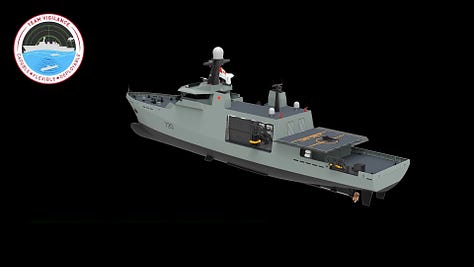
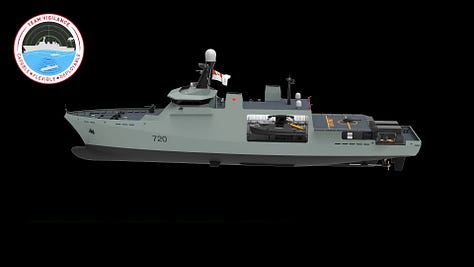
The Vigilance Class is an Offshore Patrol Vessel concept first publicized by Vard Marine at CANSEC 2023. The design seems to be loosely based off another Vard design, the 072, another, much simpler OPV concept.
There isn't much by the numbers to go by when it comes to Vigilance and believe me, I have attempted but have yet to reach anyone at Vard about this.
While public information is limited, there is a bit out there though in regards to the vessels capabilities:
~80m in length
20 person crew
Complement for up to 45
5000nm range
Dedicated UAV/UAS Facilities
UAV launchpad
Built to commercial standards
A pretty standard ship for its size. There is no information on it'd tonnage nor speed, although I will make the assumption that the ships are capable of at least 25 knots (The minimum CMMC is seemingly aiming for) and weigh in the range of 1000+ tons.
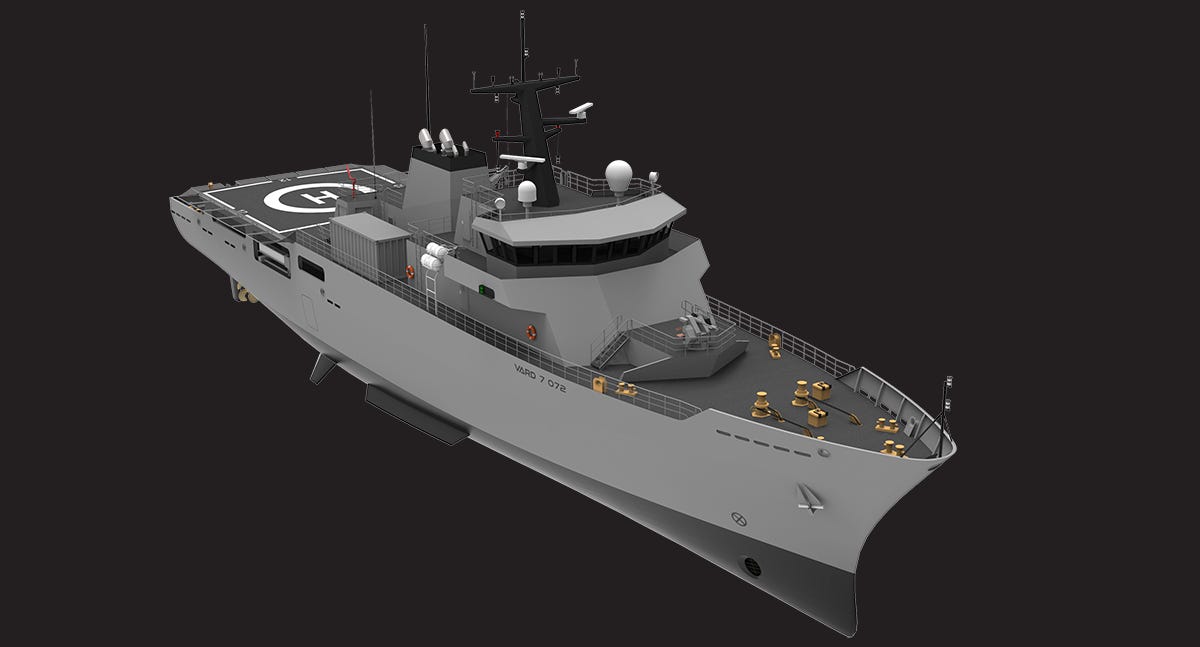
The Vigilance primary feature is its modularity. The ship is designed to beoutfitted with SH Defences Cube launch-and-recovery modules.
The SH Defence Cube System is a modular and flexible solution designed to enhance the versatility of naval vessels. It allows ships to be quickly reconfigured for different missions using standardized container-sized modules.
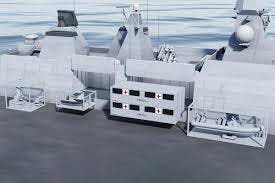
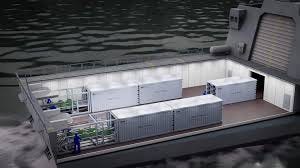
The Cube System uses standardized 20' or 40' containers that can be equipped with various mission-specific payloads including MCM, USV, ASW and whatever else you can think of.
On this note, I do like the Cube system, and think it is something that could be a valuable asset in the future. It's one thing here that really does catch the eyes.
The Vigilance has the capacity for 4x40ft or 8x20ft ISO Containers both on its modular mission deck and mission bay.
Redesign and Mk. II
Over the last year the Vigilance Class has seen major redesigns to the vessel, along with the introduction of a new variant to the Vigilance, the Flight II.
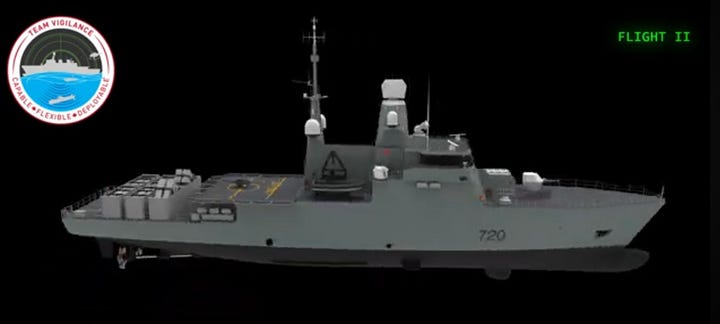

I tend to refer to these under the designation of Mark-I and Mark-II for simplicity. While both remain similar, MK.II notably features a reworked mission deck and landing pad and trades in the open mission bay. A new Bofors 40 is also added.
Of course the real standout of MkII isn't what it offers at its base….

I don't want to dive to deep into CMMC. That is a much bigger project for another day, same with Vards overall offering, both in vessel and economic to the CMMC project.
Instead I'll be focused on the ships themselves here. So what kind of systems and armaments do each Flight offer?
Flight I

Flight I of the Vigilance Class is the base model of platform. Vard has spoken of it as a ‘Hybrid’ vessel, blending a mix of COTS and military hardware to both reduce costs and ease maintenance.
Along with Vard, Thales is the other chief supplier behind the Vigilance class, providing both Combat Systems Integration (CSI) and Electronic Systems Integration (ESI)
Flight I features Thales NS50 radar, an advanced 4D Active Electronically Scanned Array (AESA) radar that provides superior detection, tracking, and classification capabilities.
This radar is optimized for use on a variety of naval vessels, offering a range of over 180 kilometers for air targets and 80 kilometers for surface targets. The NS50 can simultaneously track hundreds of targets
Along with the NS50, Flight I is also equipped with the Mirador electro-optical surveillance and tracking system, providing 360-degree panoramic coverage and high-performance day and night monitoring. It combines a high-definition thermal imager, daylight camera, and eye-safe laser rangefinder to detect and track surface and airborne targets at long distances, even in difficult conditions.
Armament on Flight I is kept realities light. While in theory Flight I could carry the same combat modules as Flight II, it is highly unlikely that we would see that given the Systems used.
The Bofors 40 mm MKIV is the main armament of Flight I, along with provisions for two remote weapons systems in either 12.7 or 20mm. Flight I is designed to be lightly armed, fitting for its OPV heritage.
Funny enough Vigilance reminds me of another vessel currently in the works, the City class MCM by Naval Group.
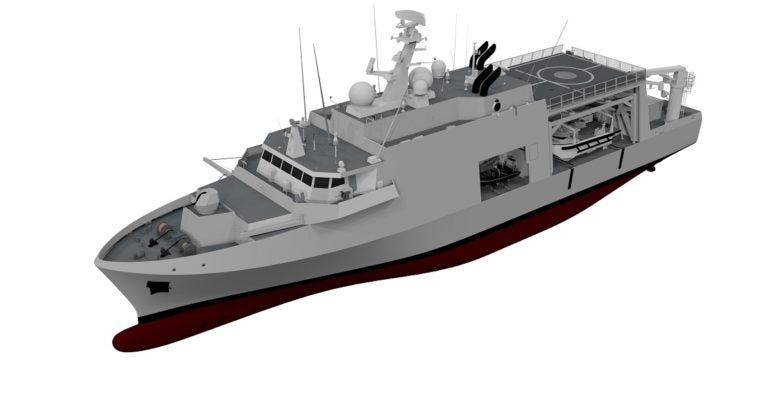
The City class MCM is a joint Belgian/Dutch design developed to replace their aging Tripartite-class and Alkmaar-class minehunters. The program, known as rMCM, will produce a total of 12 ships, with each country receiving six vessels. These ships are being constructed by Belgium Naval & Robotics, a consortium that includes Naval Group and Exail (formerly ECA Group)
While larger, the City class features a lot of the same systems employed on the Vigilance, including the NS50 radar and Bofors 40mm. Both are also designed to fill a similar purpose, being highly autonomous, modular vessels to replace an aging fleet of MCM vessels.
Point being, the Vigiliance Flight I represents what I consider to be a fairly standard offering in today's world of OPV. It is modular, larger than the previous generation with a focus on autonomy and unmanned systems.
Is it bad to be standard? Absolutely not.
There is a reason we are seeing vessels like this pop up more and more, the demand is there and navies across the world are adapting to an evershifting enviornmwnt where autonomous systems are picking up a lot of the work that OPV were designed to handle.
If this was all, I don't think there would be much to say of Vigilance other than to give it a respectful nod.
Yet that isn't it….
Not by a long shot….
Enter Flight II

At CANSEC 2024, we got our first look at the new and improved Vigilance class. While Flight I remains fairly simple, Vard had another version of the Vigilance to show off, the so called Flight II.
Now Flight II is fundamentally the same vessel as Flight I, designed to apparently bridge the gap between an OPV and frigate when it comes to firepower.
Compared to Flight I, this version comes equipped with The NS-100 as the primary sensor, providing comprehensive air and surface surveillance with a range exceeding 250 kilometers. It offers 4D tracking, including azimuth, elevation, range, and Doppler, ensuring precise detection and tracking of multiple targets, from aircraft to ships.
Complementing the NS-100 is the STIR Tracking & Illumination Radar, a medium-to-long range fire-control radar essential for guiding missile systems and naval guns. It provides precise target tracking and illumination, enabling effective engagement of threats.
lastly for medium-range surveillance, the Scout Mk3 Covert Surveillance Radar offers discreet monitoring capabilities, ideal for stealthy operations where maintaining a low profile.
It's a fairly heavy package of Sensors more akin to a Corvette or Light Frigate over a patrol vessel. Yet it dwarfs in comparison to the firepower Vard claims these vessels could offer.
Flight II keeps the Bofors 40 and RWS, while now adding a quite curious 2x3-Cell ExLS for Close-In Air Defence.

For those who don't know, ExLS is a Vertical Launch System (VLS) designed by Lockheed Martin as a compact, cost effective alternative to the larger MK.41.
In this case, ExLS is used as part of the ‘Sea Ceptor’ system, the naval version of the Common Anti-air Modular Missile, or CAMM for short.
One of the key features of the ExLS is its ability to host CAMM missiles in a "quad-pack" configuration, allowing four missiles can be stored and launched from a single ExLS cell.
This provides Vigilance up to 24 CAMM missiles providing protection against aerial threats at ranges up to 25km, a significant increase in protection from Flight I.
Of course, there is a bit of detail missing here. It is likely that Vigilance was designed with interoperability with the River class in mind, when thr River class still had its own ExLS system.
Recently though, the River Class has lost it's ExLS in favour of the RIM-116, which was always the preferred choice that the Royal Canadian Navy had anyways.
It's yet to be seen if Vigilance sticks with CAMM or decides to replace it in the future. The lack of it in the River class brings in to question the worth of integrating a new, orphaned system strictly for something that is meant to be a cheap, simple replacement.
Of course, the part everyone comes to Vigilance these days for isn't the sensors, but all the ducking missiles Vard would like you to believe could be thrown into this thing
The littlest arsenal ship
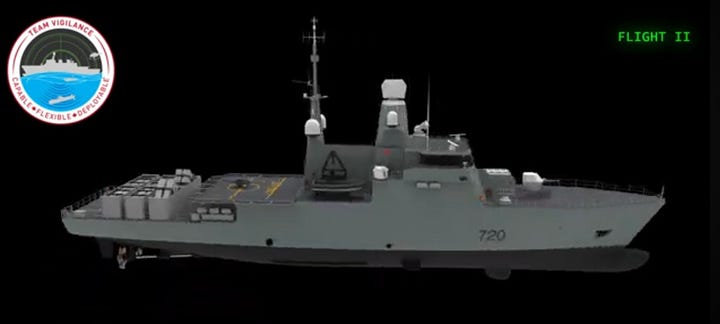
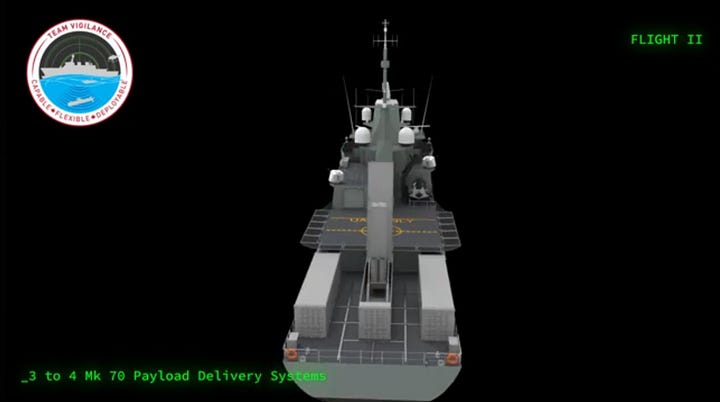
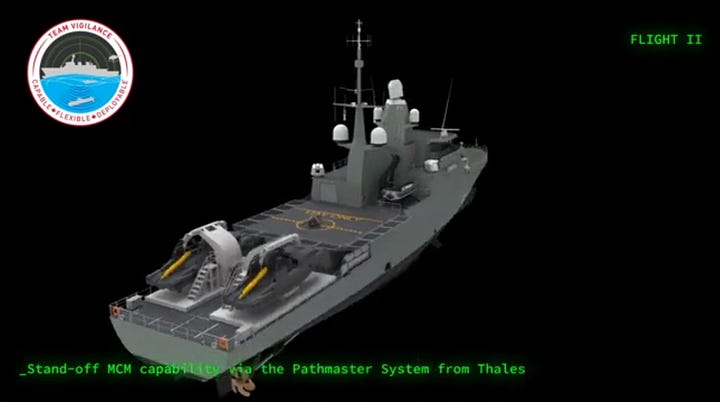

This is the thing everyone talks about. In fact, it's the only thing people talk about with Vigiliance, to the point where I find it blocks out actual discussion of the vessel itself.
Vard has some interesting idea for what could be put onto the Vigilance Class with a bit of imagination and time. Given the Vigilance is unable to truly digivolve into a proper corvette, Vard has opted to center the Vigilance around containerized weapons systems.
From Cube based Naval Strike Missiles (up to 24!) to up to four Mk.70 VLS strapped to the mission deck. Vigilance tries its best to be Canada's littlest arsenal ship, ready to deliver three River classes worth of firepower in what can best be described as the ‘Rabid Squirrel’ of OPV.
It isn't Vards fault they're trying to sell a concept to a project that doesn't fully exist yet, at least when it comes to a set requirement. They're preparing in case the project goes one way or the other, which we will discuss in a bit.
It's hard to understate just how insane this idea is.
For those who don't know, the Mk.70 is a containerized version of the Mk.41 VLS. It's design allows for flexible deployment on a wide range of platforms, including ground-based units and naval ships.
The Mk.70 is capable of launching the same missiles as the standard Mk.41, including the Standard Missile 6 (SM-6) and Tomahawk Land Attack Missiles (TLAM).
So yes, there is a possibility this little 1000 ton fuck could be tomahawk dropping on people, which I won't deny is funny as he'll and would be wildly entertaining to see. Yet we aren't here to meme.
Of course, while entertaining, Flight II is just a concept and is likely to remain one, no matter how much speculation people throw at things.
Overall thoughts
I don't hate the Vigilance Class. I really don't. I don't think it's particularly special, especially these days where a hundred similar concepts are running around.
Yet it's a fine OPV, comparable to others in it's class, if not lacking in some aspects compared to some of its competitors.
Those who talk to me know that I often call the Vigiliance ‘Little Venari’ due to its similar appearance and specialties to the Venari-85.
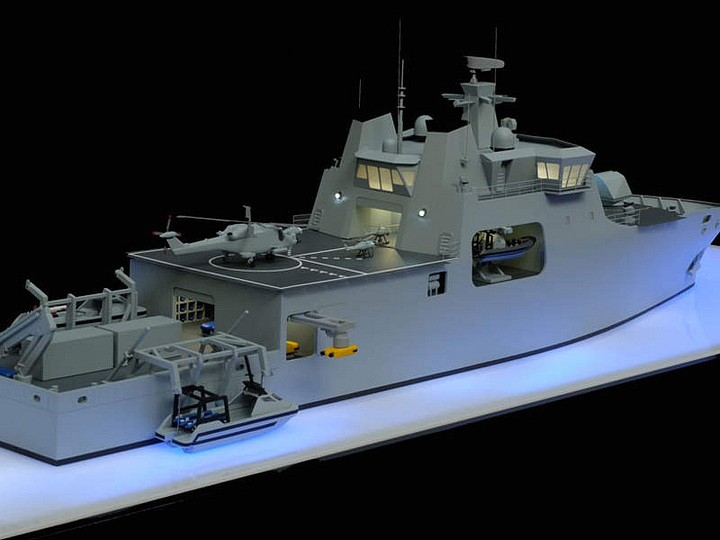

The BMT Venari-85 is an mine warfare and hydrographic vessel designed by BMT Defence Services to meet the needs of the Royal Navy as it decomissions its fleet of MCM vessels.
Launched in 2017, this 85.9-meter-long ship is very reminiscent of the original Vigilance proposal. Both ships are of a similar length and have similar speeds, range and crew requirements.
Along with Vigilance, its design incorporates extensive modularity and autonomy, with large mission bays designed to accommodate different mission modules, containers, and autonomous vehicles
This enables it to operate a variety of unmanned vehicles—both aerial and underwater— such as the Atlas Elektronik SeaFox.
all of these allow both vessels to support a wide range of missions, including mine countermeasures (MCM), anti-submarine warfare (ASW), maritime security, humanitarian assistance, and disaster relief.
I plan to go in depth with Venari-85 as part of my CMMC series. There are so many interesting and unique designs for this class of vessels that it gets overwhelming! I have yet to decide how many I'll do, but this will be one of them.
Of course, to deviate for a second, there are some things Venari offers that Vigilance lacks, such as the 15 ton crane and larger flight deck common on most other OPV of this size, but that is for another post.
The point being, modern OPV are increasingly focusing on three factors:
Modularity
Flexibility
Autonomy
The future of Mine Countermeasures is in autonomous vehicles, with OPV acting as the ‘mothership’ directing and organizing these autonomous vessels.
These vessels need to be able to be flexible in their tasks while being Modular enough to swap and adapt to the threats and missions, both military and civilian, they will be tasked to handle.
That is part of what is sadly annoying to me about Vigilance. The redesign of Mk.II feels like a step back for the platform, moving from the Modular OPV to try and find a way to be something it isn't.
The Vigilance redesign could have worked and improved on it’s simple design to refine itself with those little things it was missing to really make it an all around good option.
Instead, Vard has chosen to make a warship for a project that needs a pickup, able to handle a number of smaller tasks that the current Kingston Class handle, from MCM, Disaster Relief, Counter-Piracy, etc.
Instead we are making shitty corvettes that fill the needs of no one, instead trying to be a master of all just in case the need ever arises.
What's even more funny, the real talk here should be to SH Defense, the super awesome people behind the Cube system that is the backbone of the proposal people, something that we should be looking at for whoever wins CMMC anyways.
Of course, this is part of a much larger issue, one that is common in any Canadian defence discussion
Set up for disspaointment
I will not pretend I'm not a big part of this problem. The fact is that I get hyped easy, and in turn get overly excited for things sometimes without thinking.
It happens. We all do it, yet from GBAD to CMMC, we have a common problem in defence discussion of setting ourselves up for disappointment by looking for solutions to problems that aren't there.
I did it earlier this week with GBAD, where discussion looks beyond the requirements, often ignoring the SHORAD requirements for hyping up a product like IRIS-T SLM or NASAMS that aren't what the project lays out.
When inevitably this doesn't come to fruition because it was never the projects intent, people get disappointed and upset. Often times this comes at the detriment to proper discussion.
I am extremely guilty of fueling this, and I am trying to stop myself from doing it. That's why it's good to remind about what the aims of the project are, and in turn why I try to lay out projects and potential options that fit in that space.
Vigilance has decided to shift itself in that direction, making a solution for something that isn't a problem. The fact is that CMMCis not looking for a makeshift warship, and to see Vard put a heavy focus on that is dissapointing from the original proposal that, to the point it feels like it is sacrificing itself to fill a fantasy requirement.
Granted, maybe they have to? I never knew why Vard jumped on this so early, as CMMC remains undefined, unstained and unfunded as of this writing.
I hope to be proven wrong, and that Vigilance evolves into a proper option. There is still time for CMMC to shift focus and change, it's still in the early stages of development.
Yet as it stands all I see is an orphan solution.

